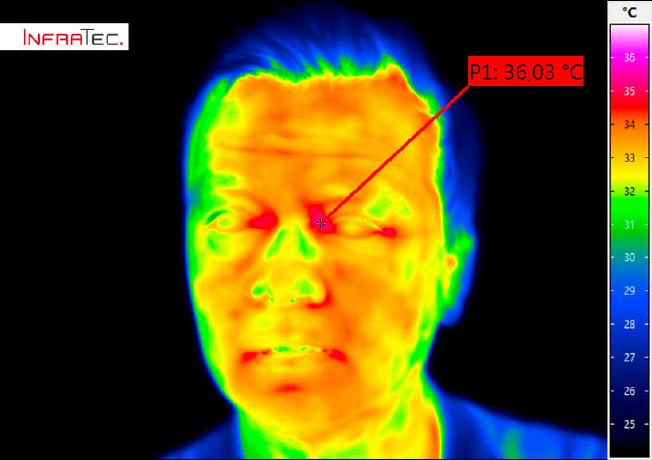Apr 20 2020
The pandemic triggered by the coronavirus currently poses enormous challenges to public life and health care systems worldwide. A significant contribution to containing the rapid spread of the virus is the interruption of infection chains. In addition to the precautionary measures known in this field, the detection of infected people can be a contributory factor.

Especially when the currently highly restrictive measures to prevent contact in daily life are lifted step by step, appropriate screening measures should be used: Highly frequented areas with a great risk potential, such as medical first-aid wards, hospitals and nursing homes, but also schools, shopping centres, large companies, sports stadiums and theatres as well as transport hubs such as airports, seaports, railway and intercity bus stations are just a few examples of where screening measures are applied. They help to minimise the spread of dangerous infectious diseases, such as the coronavirus (2019-nCo, Covid-19, SARS-CoV-2) and, in the past, the “severe acute respiratory syndrome” (SARS), the Ebola virus (EVD) and the "Middle East Respiratory Syndrome Coronavirus" (MERS-CoV), through consistent checks on individuals.
Certainly, thermographic cameras can neither detect the virus itself nor a person carrying the virus! However, these cameras enable the non-reactive, contactless and planar recording of surface temperatures. Hence, they are highly suitable for the quick and easy detection of elevated body temperatures or fever, which can be an indication of a possible virus infection of the people subjected to screening. Such indications must, of course, always be followed by other examination methods that allow a reliable positive or negative statement about the disease and to initiate appropriate actions!
The thermographic temperature measurement for fever detection puts high demands on suitable thermographic cameras: In addition to a high thermal resolution, which can make even the smallest temperature differences visible, there must be very good stability and measuring accuracy in order to be able to reliably distinguish a person with an elevated body temperature or fever from a person without these symptoms using critical temperature thresholds and alarm values. Another very important criterion is the required high geometric resolution, which is expressed in the number of so-called infrared (IR) pixels. This is necessary because the area that has been proven in several studies to be suitable for reliably detecting fever and elevated body temperature at the inner eyelid angle has only a small surface area, but must be sharply mapped for error-free temperature measurement. The measurement itself takes less than a second and is usually carried out in access areas, for example at the entry control at airports, where the people who are to be screened are already lined up. Largely determined by the wide-ranging requirements of the users, the evaluation of the measured data can range from simple manual use to select people with elevated body temperature or fever for further examinations to automatic detection and storage.
InfraTec Thermographic Cameras as Instruments for Fever Detection
The very stable and highly accurate digital VarioCAM® HD series thermographic cameras from InfraTec are based on thermally and geometrically high-resolution microbolometer FPA detectors with up to (1,024 × 768) IR pixels. They deliver brilliant 16-bit thermographic images in realtime and are therefore ideally suited as instruments for fever detection. Large external displays can easily be connected to the cameras via HDMI interface to visualise the high-resolution thermal images. The comprehensive range of accessories, interchangeable lenses for adaptation to local requirements, optional PC or laptop connection, the IRBIS® 3 software packages with various functionalities as well as expert advice from experienced InfraTec engineers complete the range of services. This results in a thermography system that is optimally tailored to the requirements of fever detection for the individual user, and which is easy to operate and works with extreme reliability and repeat accuracy.